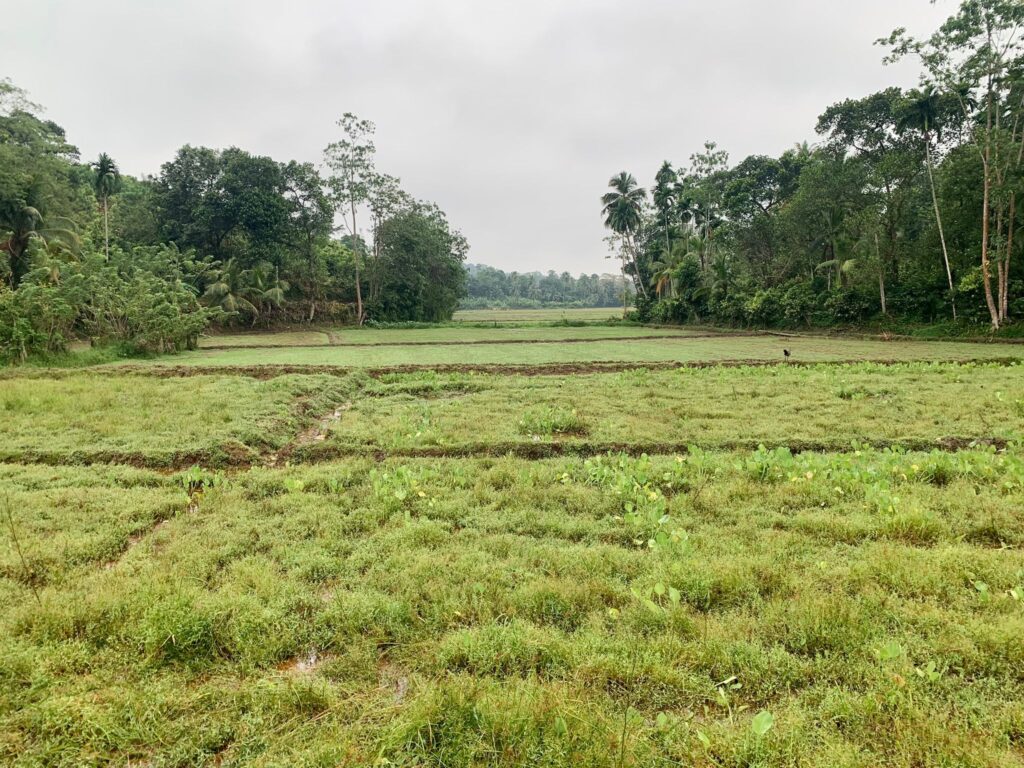‘Witnessing is a practice that solves your problems without changing them. They are still problems, but they are not problems in the way they were. It solves all your problems and none at the same time.’

Dear Integral Meditators,
This week’s article looks at meditative effortlessness from the perspective of witnessing practice. It’s a playful variation on a past article on ‘That which solves all your problems & none‘ from back in 2014. If you enjoy it, then it will form a central part of this week’s Tuesday & Weds meditation class. So do feel free to pop in, either live or online!
It’s a slightly longer article, so you might find it worthwhile reading it in two or three parts, coming back to it at different times…
In the spirit of the effortless,
Toby
Effortless adaptation – Solving all your problems & none (II)
You can’t master what you are over identified with
This article is about how to adapt and flow with challenges in our life in as ‘effortless’ or ergonomic manner as possible. We can divide our challenges into ‘problems’ and ‘situations’. In a previous article entitled ‘Wanting what you like, or liking what happens?’ I made the distinction between the two as follows:
“A lot of the things that we have labelled ‘problems’ in our life are more like ‘situations’. A problem is something that by definition has a solution. A situation is more a set of circumstances that we find ourself in. There may be no apparent solution to the situation, or the solution would cost more than it would be worth to ‘solve’ the problem. In this case we have to simply accept and work with what is. If we can harmonize our relationship to what ‘is’ today, meaning our situations, then chances are we will find ways to enjoy it and derive some value from it.”
If we want to solve and adapt effortlessly, a primary principle is you can’t master what you are over identified with. Here we are going to explore how to become more objective in our challenges, therefore struggling less as we adapt and solve.
The ultimate subject of consciousness
Initially in meditation (and then in daily awareness), if we look within, we can divide our consciousness into two:
- The objects within consciousness, or the content that we can observe
- The subject of consciousness, or that which is observing, AKA ‘the witness self’
During the day, quite often (almost always in fact), we confuse the subjects of consciousness with the objects of consciousness. We identify with our physical body and sensations, emotions, and moods. We identify with our story, our idea of who we are, as well as our beliefs and worldviews. All of these can be observed, watched, made into objects. The ‘self’ is, to use a Zen expression, ‘the ultimate subject of consciousness’. It is that within us that observes, which we can experience and be, but that we cannot watch as an object. You can rest in the witness self, but you can’t ‘see’ it. This is because it is simply consciousness itself, with no characteristics of form or time. It just ‘IS’!
Witnessing to adapt & solve
One of the beauties of sitting as the witness self is that it helps us to gradually dis-identify with the things in our consciousness that we are currently identified with. By doing this we make our challenges as well as the thoughts, feelings and beliefs associated with them objects rather than subjects. This means that its much easier to work with them and master them, because they are not ‘me’ or ‘mine’. I can be more objective, calm, strategic and (holistically) compassionate because I am not over identifying with what is going on. If you apply witnessing to any challenge, you are going thru, it will help substantially. Here are two examples from the last week:
- In a conversation with a friend, I was told a story of someone who had been aggressive and racist to him. Later in the day I felt strong anger and protectiveness about this. I noticed I was strongly identified with this ‘protector/guardian/’ aspect of myself. I modulated it simply by witnessing it; making it an object of awareness rather than ‘me. This helped me to integrate the good parts of this part of my personality, without wasting energy getting caught up and attached to the energy it generated in me.
- I had a discussion which verged on an argument. I noticed that there was a part of me that I identified with that was very concerned about being ‘right’. Noticing and witnessing this part of self helped me to transform it from subject to object, and accept the situation without wasting mental, emotional or verbal energy. Relatively effortlessly it helped me to keep focused on what I considered important in the day, without getting ‘trapped’ by my identification with rightness.
Through witnessing around your challenges, you can change your experience of them without much of a struggle, using the technology of witnessing. I can’t recommend highly enough building your competency around this domain of mindfulness. Life gets a lot easier, free-er and more creative, even in the face of intractable and long-term circumstances.
A final somewhat Zen sentence for you: ‘Witnessing is a practice that solves your problems without changing them. They are still problems, but they are not problems in the way they were. It solves all your problems and none at the same time.’
Article content © Toby Ouvry & Integral Meditation Asia 2024. you are welcome to share, but please cite the source, thanks! Contact info@tobyouvry.com
Follow Toby on: LinkedIn, YouTube, Instagram
Integral Meditation Asia
Online Courses * 1:1 Coaching * Books * Live Workshops * Corporate Mindfulness Training *Life-Coaching * Meditation Technology